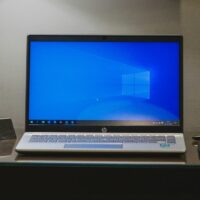Mac computers come equipped with powerful built-in tools that make capturing screenshots and recording screen activity simple and efficient. These features have been refined over years, providing users with quick keyboard shortcuts and an intuitive toolbar for precise control. Whether you need to save an image of your entire display, a specific window, or a selected area, or if you want to create a video demonstration, macOS offers everything without requiring third-party applications.
Understanding these tools is essential for anyone using a Mac, from students documenting research to professionals creating tutorials or troubleshooting guides. The primary methods rely on keyboard combinations that work across all recent macOS versions, including the latest releases in 2025. Additionally, the Screenshot toolbar introduced in macOS Mojave and enhanced in subsequent updates serves as a central hub for both screenshots and recordings.
This guide covers every method in detail, including basic shortcuts, advanced options, editing capabilities, and practical tips to enhance your workflow. By mastering these techniques, you can capture exactly what you need quickly and organize your files effectively.
Capturing Screenshots Using Keyboard Shortcuts
The fastest way to take screenshots on a Mac is through keyboard shortcuts. These combinations are memorized easily and provide immediate results. When you use them, you’ll often hear a camera shutter sound, and a thumbnail may appear temporarily in the corner of your screen for quick actions.
To capture the entire screen, press Command ⌘ + Shift ⇧ + 3. This method grabs everything visible on all connected displays if you have multiple monitors. The screenshot saves automatically as a PNG file, named with the date and time for easy identification.
For a selected portion of the screen, use Command ⌘ + Shift ⇧ + 4. Your cursor turns into a crosshair, allowing you to click and drag over the desired area. Once released, the capture is complete, and you can adjust the selection mid-drag by holding the Spacebar to move it or the Shift key to lock dimensions.
To capture a specific window or menu, press Command ⌘ + Shift ⇧ + 4, then hit the Spacebar. The cursor changes to a camera icon, and hovering over windows highlights them. Clicking captures the window with a subtle shadow effect, perfect for clean presentations.
If your Mac has a Touch Bar, capture it separately with Command ⌘ + Shift ⇧ + 6. This is useful for demonstrating Touch Bar customizations or controls in apps that utilize it.
Accessing the Screenshot Toolbar for More Options
Pressing Command ⌘ + Shift ⇧ + 5 opens the Screenshot toolbar, a versatile interface that combines screenshot and recording functions. This toolbar appears at the bottom of your screen and offers buttons for different capture modes. It replaced older methods in many workflows due to its additional controls.
In the toolbar, you’ll see options to capture the entire screen, a selected window, or a selected portion. Each button provides a clear icon and tooltip for guidance. After capturing, a thumbnail appears, allowing instant markup or sharing.
The toolbar also includes an Options menu with powerful customizations. Here, you can choose where captures save, such as the Desktop, Documents, Clipboard, or a custom folder. You can enable a timer for 5 or 10 seconds, useful for capturing dropdown menus that close when using shortcuts.
Additional settings include showing or hiding the mouse pointer and enabling a floating thumbnail for quick edits. These options apply to both screenshots and recordings, making the toolbar a one-stop solution.
Recording Your Screen with Built-in Tools
Screen recording on a Mac is just as straightforward, using the same toolbar accessed via Command ⌘ + Shift ⇧ + 5. Select either Record Entire Screen or Record Selected Portion from the toolbar. For the latter, drag to define the area before starting.
Once selected, click Record to begin. A small stop button appears in the menu bar for easy access. To end the recording, click this button or press Command ⌘ + Control + Esc. The video saves as a high-quality MOV file.
In the Options menu, choose a microphone for audio input if needed. This captures your voice for narration, ideal for tutorials. You can also enable showing mouse clicks, which highlights actions visually during playback.
Recordings handle multiple displays seamlessly, capturing the active one or a portion across screens. The process is smooth, with no noticeable lag on modern Macs, and files include system audio only if configured separately, though microphone input is standard.
Using QuickTime Player as an Alternative
For users preferring a different interface, QuickTime Player offers screen recording. Open QuickTime, then go to File > New Screen Recording. The familiar recording controls appear, similar to the toolbar.
Select full screen or drag for a portion, then start recording. Audio options are available via the arrow next to the record button. Stop via the menu bar icon. This method is reliable on all macOS versions supporting it.
Editing and Managing Screenshots and Recordings
After capturing, a thumbnail often appears in the screen’s corner. Clicking it opens a markup editor with tools for drawing arrows, adding text, shapes, or cropping. These quick edits save time before sharing or saving the file permanently.
For more advanced screenshot edits, open the file in Preview or Photos. Recordings open in QuickTime by default, where you can trim the start or end easily. Export options allow format changes if needed.
Screenshots default to PNG format for crisp quality, while recordings use MOV. Change the default save location in the toolbar’s Options to keep your Desktop clutter-free. Organize files by creating dedicated folders for projects.
To capture directly to the clipboard without saving a file, add Control to any shortcut, like Control + Command ⌘ + Shift ⇧ + 3. This allows instant pasting into documents or messages.
Key Features and Customizations
The Options menu in the Screenshot toolbar provides deep control. Set a timer to prepare the screen, especially for menus or pop-ups that require interaction. Choose to remember the last selection for repeated portion recordings.
Enable floating thumbnails to preview and edit immediately after capture. Show the mouse pointer in screenshots for instructional clarity, or hide it for cleaner images. These small adjustments make a big difference in professional outputs.
For recordings, selecting a microphone ensures clear narration. The show mouse clicks option adds visual emphasis, helpful in demonstrations. Adjust volume levels beforehand for optimal audio quality.
On multiple monitors, shortcuts capture all screens by default for full setups, or use portion selection for specific displays. This flexibility supports complex workflows like video editing or presentations.
Pro Tips for Better Screenshots and Recordings
- Use the timer for tricky captures: Activate the 5- or 10-second timer in Options when you need to open menus or dialogs that close with keyboard input. This ensures you capture exactly what’s needed without interference. It’s particularly useful for documenting software interfaces or settings panels.
- Highlight actions in recordings: Enable the show mouse clicks option for tutorials, as it visually indicates where you’re clicking. This makes your videos more understandable for viewers learning a process. Combined with narration, it creates professional-quality guides.
- Organize saves from the start: Set a custom folder in Options instead of the Desktop to keep things tidy. This prevents clutter and makes finding files easier later. Create project-specific folders for ongoing work.
- Capture to clipboard efficiently: Use Control-modified shortcuts to copy captures directly for quick insertion into emails or notes. This skips file saving when you only need temporary images. It’s ideal for fast communication or annotations.
- Maximize screen clarity: Increase brightness and close unnecessary apps before capturing for cleaner results. This improves visibility in shared screenshots or videos. A distraction-free screen leads to more professional outputs.
- Combine portion and window captures: For complex layouts, use portion selection after window capture to fine-tune. This gives precise control over what appears in the final image. It’s great for focusing on specific elements without extras.
- Test audio settings beforehand: Always check microphone levels before recording to avoid low volume issues. Speak clearly and position the mic properly. Good audio elevates the overall quality of your screen recordings.
- Utilize quick markup tools: Click thumbnails immediately to add annotations like arrows or text. This integrates editing into your workflow seamlessly. Save time by finalizing captures right after taking them.
Frequently Asked Questions
Where are screenshots and recordings saved by default on a Mac?
By default, both screenshots and screen recordings save to the Desktop. Files are named with “Screenshot” or “Screen Recording” followed by the date and time. You can change this location in the Screenshot toolbar’s Options menu.
How do I capture a screenshot without the shadow on windows?
When using the window capture mode (Command + Shift + 4, then Spacebar), hold the Option key while clicking to remove the drop shadow. This creates a cleaner, borderless image suitable for documentation.
Can I record internal system audio with the built-in tools?
The native screen recording captures microphone audio but not system sound directly. For internal audio, third-party solutions or loopback drivers are required, though the built-in microphone option works well for voiceovers.
What if the keyboard shortcuts stop working?
Restart your Mac or check System Settings > Keyboard > Keyboard Shortcuts for conflicts. Ensure no third-party apps are overriding them. Resetting preferences can also resolve issues.
How do I record a specific app window only?
Use the selected portion recording and carefully drag around the window, or capture the full screen and crop later. The toolbar doesn’t have direct window recording, but portion selection provides precision.
Is there a way to set a custom file format for screenshots?
While PNG is default, advanced users can change it via Terminal commands to JPG or other formats. This reduces file size for web use but may affect quality.
How long can screen recordings be?
There is no strict limit; recordings continue until stopped or storage runs out. Modern Macs handle long sessions well, but monitor disk space for extended videos.
Can I pause a screen recording?
The built-in tool does not support pausing; you must stop and start a new recording. For pause functionality, consider alternative apps.
Conclusion
Mastering screenshots and screen recordings on your Mac enhances productivity and communication across various tasks. From simple keyboard shortcuts to the comprehensive Screenshot toolbar, these built-in features provide versatile options for capturing exactly what you need. Customizations like timers, audio inputs, and save locations allow tailored workflows, while quick editing tools ensure polished results.
By incorporating pro tips such as highlighting clicks for tutorials or organizing saves efficiently, you can elevate your captures. The methods described work reliably on current macOS versions, making them essential skills for any user. With practice, these tools become second nature, saving time and improving your digital documentation.










